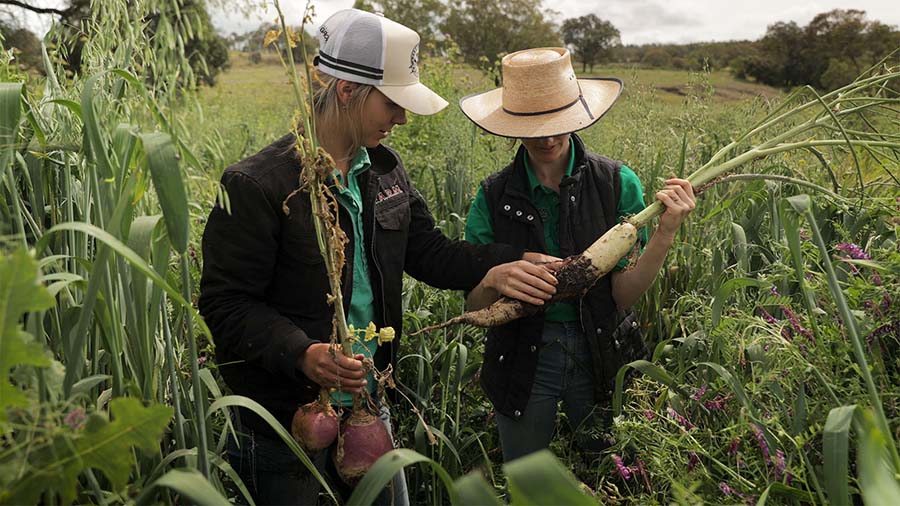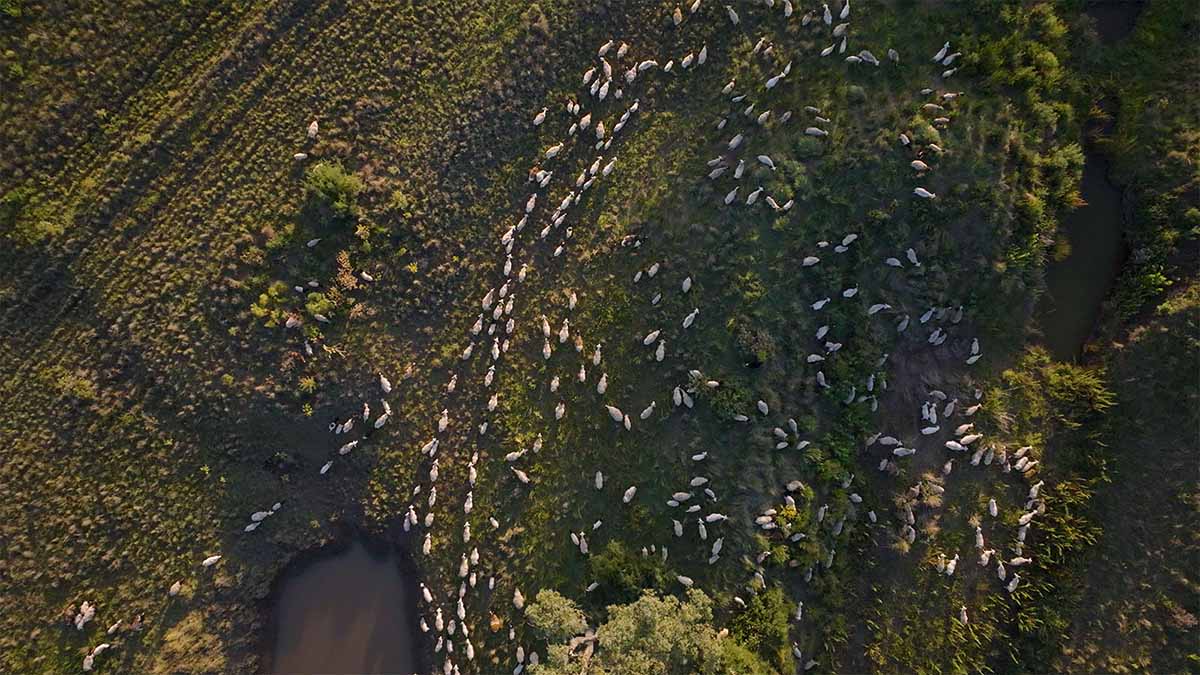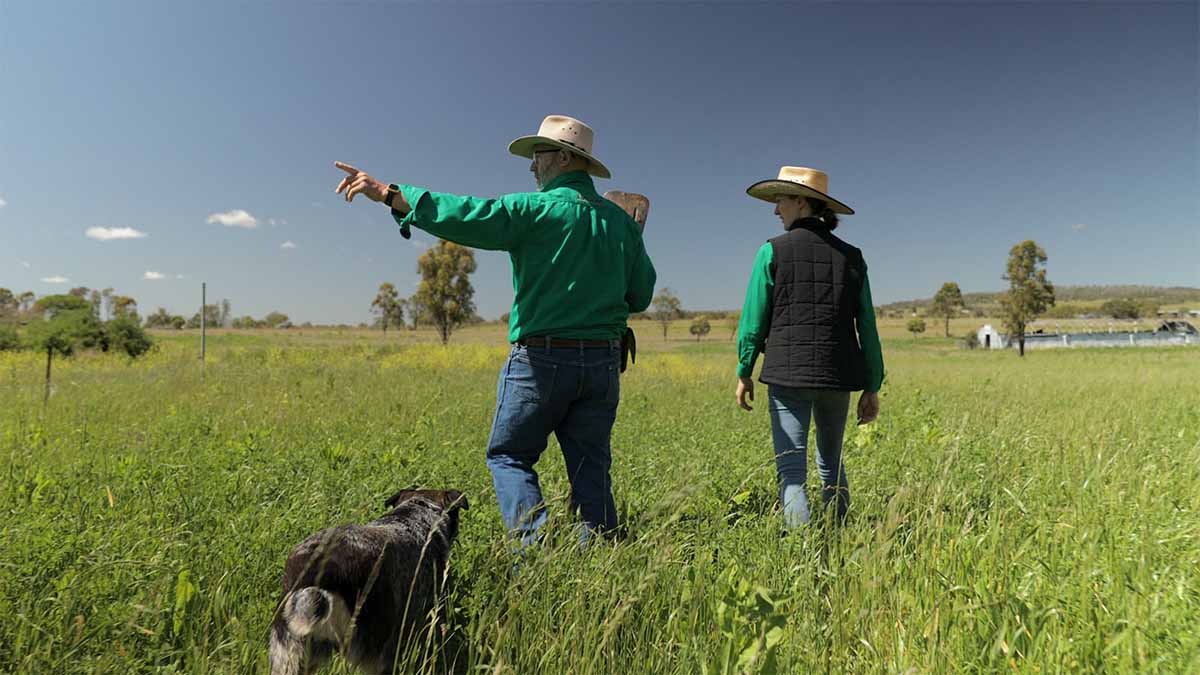Livestock:
Many producers who introduce multi-species forages see improved weight gains because of the better feed quality and feed efficiency. Along with weight gains, general animal health improves too. This is because multi-species forages offer more than just the standard proteins, energy and micronutrients.
A diversity of plant species accounts for a rich array of secondary compounds and phytochemicals that have much to contribute to stock health.
A diversity of plant species accounts for a rich array of secondary compounds and phytochemicals that have much to contribute to stock health. There is research showing that livestock are able to self-select based on their nutritional requirements. Because of this, a greater diversity of forage species leads to better overall animal health. Additionally, new lines of research are finding that livestock can even self-medicate both therapeutically and prophylactically for occurrences of disease or parasites.
Soil:
 F.A.R.M. agronomists Jess Bailey and Claudia Benn examining two brassica species in their multi-species mix.
F.A.R.M. agronomists Jess Bailey and Claudia Benn examining two brassica species in their multi-species mix.
As well as a positive effect on stock health, introducing diversity to pasture has long-term benefits to the soil. A variety of plants means that there will be a variety of root structures in the soil profile.
Some plants, such as tillage radishes, have long roots that can access deeper parts of the soil, bring up nutrients such as sulphur, and then make it available for other plants. Legumes release acidic exudates from their roots that increase phosphorus solubilisation. Other plants, such as cereal rye and oats, have fibrous root systems that stabilise the soil against erosion and allow for better water infiltration. Each species plays a role in the pasture, creating an amazing synergistic response.
Soil carbon:
Introducing a multi-species forage is now one of the methods that Australian farmers can implement to be eligible for carbon projects that offer additional income streams.
Multi-species forages can also allow for better carbon sequestration. Different plant species stimulate a broader range of soil biology. This enhances biological processes, including nutrient cycling and plant resilience. Better plant health and biomass result in improved photosynthesis and increased root exudates which feed the biology and facilitate carbon sequestration.
Land:
As well as structural, chemical and biological benefits to the soil, the land as a whole benefits from increased diversity. A multi-species forage crop will flower at different times and attract pollinators and other beneficial insects that keep pest populations low. Diversity will also reduce risk, as different species thrive in different seasons and persist through into future seasons. This means that if one species does not grow well due to conditions or pests, there will still be fodder available. Additionally, greater diversity leads to higher rates of plant succession, reducing bare ground and weed pressure.
Ultimately these benefits to stock, the soil and the land lead to increased productivity and, therefore, more profitability and farmer well-being.




